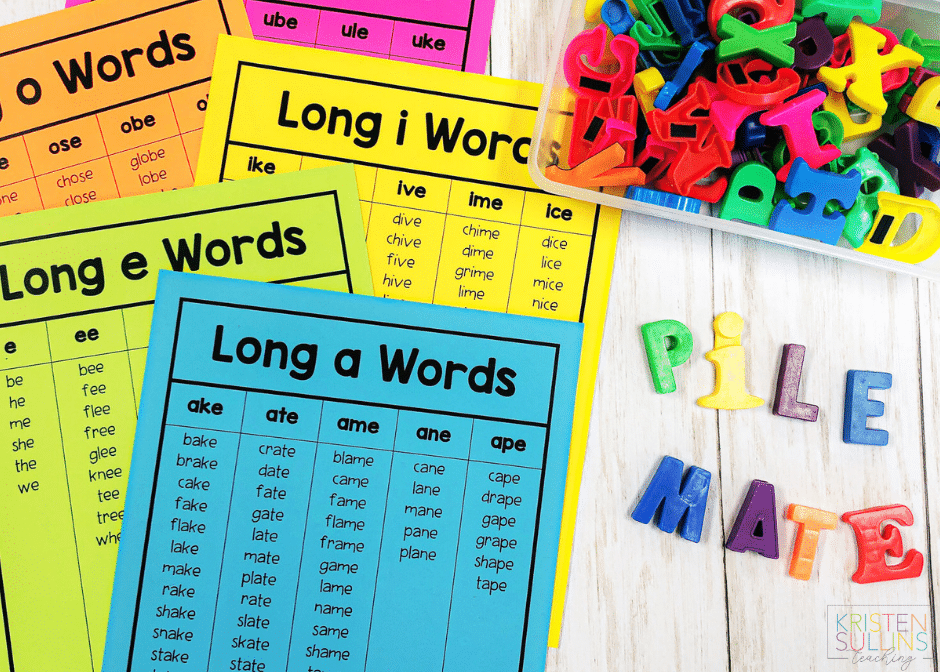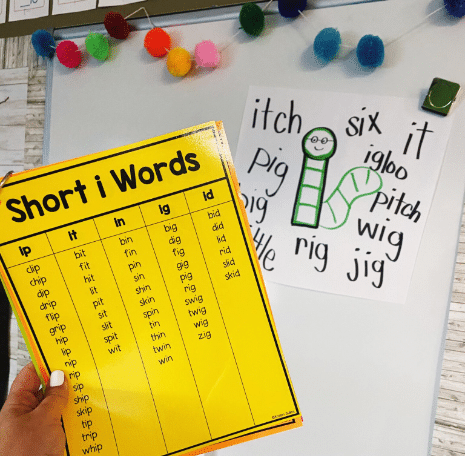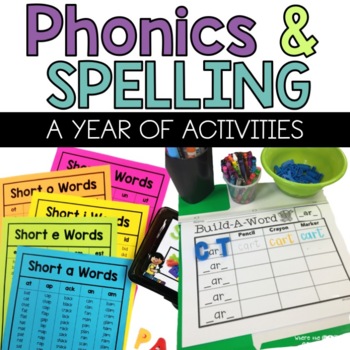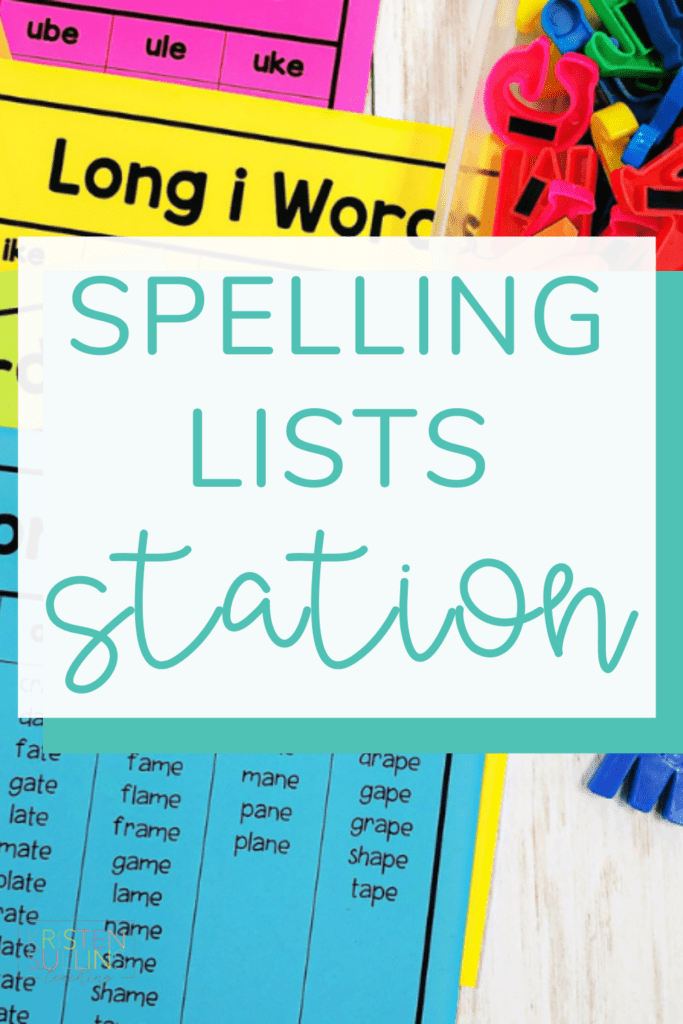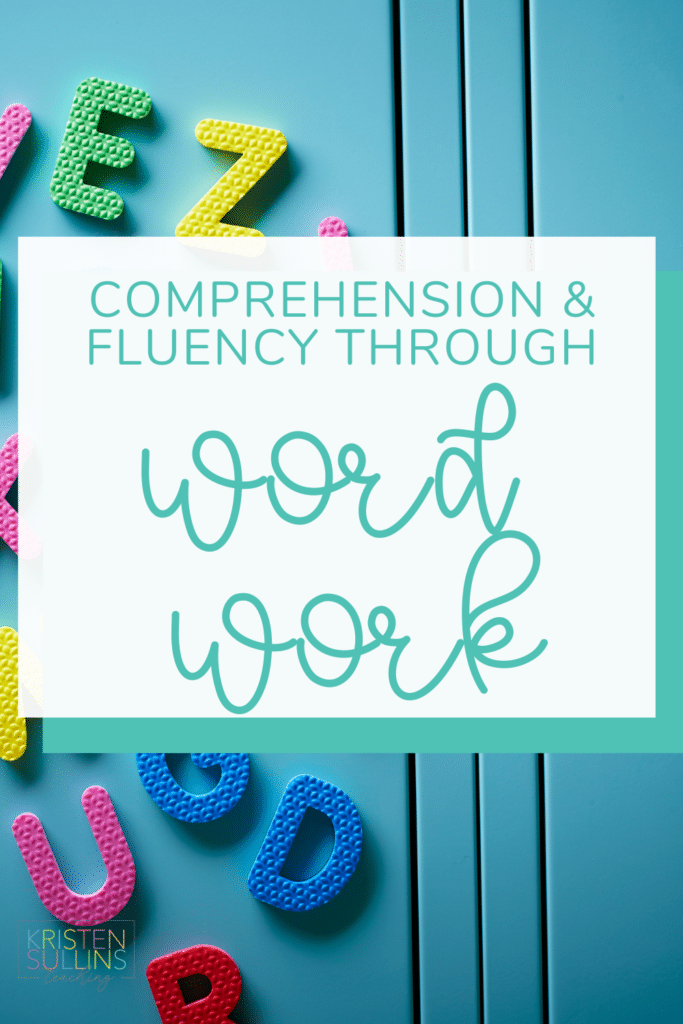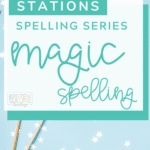Welcome back to the Spelling Station Activities for First Grade blog series!
All of these activities are spelling stations that I use in my own first grade classroom that take little to no prep on my part (because who has time for that, am I right?).
These spelling activities can be done:
- One at a time as a class (as your daily spelling practice/lesson)
- In a small group setting (as intervention)
- At a spelling station (set out one activity daily or set out multiple to give students choice over their activity – this was my personal favorite, I usually set out 4-5 activities for four weeks which saved me SO much time)
Here's a sneak peek at the entire series of first grade spelling activities that I will be covering:
Spelling Series: Stamps and Playdough
Spelling Series: Interactive Spelling Wall
Spelling Series: Rainbow Words
Spelling Series: My “dge” Words Freebie
Spelling Series: Keyboard Spelling
Spelling Series: Hangman Spelling
My best advice is to make the most of the materials that you already have in your classroom. A lot of the spelling activities in this series don’t require any materials other than writing utensils and paper, start with those!
Also, when it comes to incorporating spelling activities into your stations, don’t try to do it all at once. Start small and slowly add activities throughout the year! This will help your students maintain independence during station time because they aren’t having to learn a lot of new routines at once.
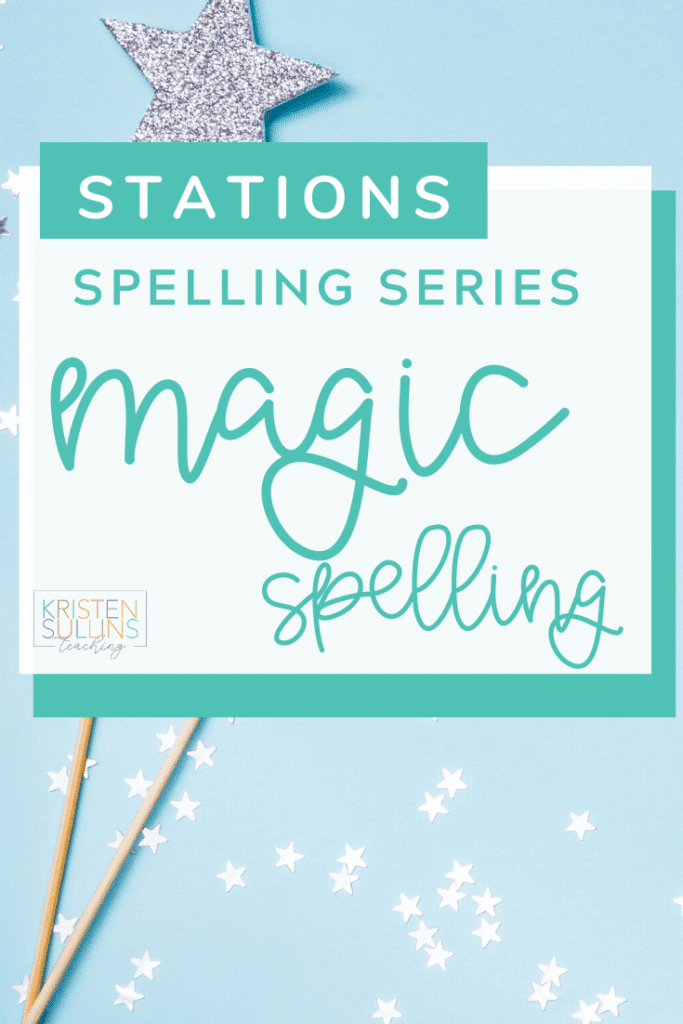
Spelling Knowledge in First Grade
So what kind of spelling knowledge should a first grade student really have?
Here are a few foundations of spelling knowledge:
Sounds can be represented by a single letter or a combination of letters (digraphs, blends)
Letters may have more than one sound
Some sounds can be represented by different letters
When spelling, words can be separated into single sounds or a combination of sounds
Knowing the 6 syllable type can help students spell
Some words do not follow typical spelling rules/patterns, BUT you can match letters to sounds in at least part of those words
Asking yourself “Does the world look right?” after spelling a word
Spelling words (encoding) and reading words (decoding) go hand and hand! They should be taught together, NOT in isolation!
First grade students are also expected to spell high-frequency words (sight words) without sounding out letter-by-letter.
Spelling Station: Magic Words
Are you ready to turn your typical spelling practice into a magical experience? Look no further than “Magic Words” – a delightful and easy-to-implement activity that brings an extra dose of excitement to your Thursday or Friday spelling sessions. Best of all, it requires minimal preparation and guarantees a spellbinding experience for your students!
Materials You'll Need:
- Blank Paper
- White Crayon
- Colored Markers
- List of Spelling Words

How to Cast the Spell:
Set the Stage: Prepare the enchanted atmosphere by gathering the materials and announcing the arrival of “Magic Words” day. Watch as curiosity and anticipation spark in your students' eyes!
The Secret Inscription:
- Students take a piece of blank paper and their trusty white crayon.
- With the invisible ink of the white crayon, they carefully inscribe their spelling word onto the paper. The secrecy begins!
Colorful Incantation:
- Now, armed with colored markers, students unleash their magical prowess by coloring over their hidden spelling word. As the colored ink merges with the invisible inscription, the magic begins to unfold.
The Grand Reveal:
- Cue the gasps and wide-eyed amazement! Like a phoenix rising from the ashes, the spelling word magically appears before their very eyes. Witness the sheer joy and wonder on their faces as they realize the power they hold.
Repeat the Enchantment:
- Encourage students to repeat the enchanting process with the remaining spelling words. Each word becomes a new adventure, and the classroom transforms into a haven of linguistic wizards and word sorcery.
Why “Magic Words” Works Wonders:
- Engagement Overload: The element of surprise and magic keeps students engaged and excited about spelling practice.
- Multi-Sensory Learning: By incorporating tactile elements like crayons and markers, this activity caters to different learning styles.
- No-Prep Magic: Minimal preparation for you means maximum enjoyment for the students. It's a win-win!
Challenge:
If you have students who are ready for more of a challenge, have them write a full sentence using their spelling word or challenge them to write a list of rhyming words with their spelling word.
Holiday Option:
If it is around holiday time, you can encourage students to use holiday colors (red and green for Christmas or orange and purple for Halloween).
Spelling Tip: Use Spelling Lists
I mentioned earlier a few tricks I use in my spelling station so that I only have to switch out materials every four weeks. The key to this method is using spelling lists.
What is a spelling list?
As simple as it sounds, it’s a list of words that follow the same spelling rule/pattern. I’ve found that using a spelling pattern rather than a set “10 spelling words” helps students really understand the spelling rule rather than just memorizing those ten words. These spelling lists are also sometimes referred to as “word family” lists because words that follow the same spelling pattern are considered to be in the same “family”.
How do you use a spelling list?
Spelling and word family lists can be used in a variety of ways:
- Spelling Station to spell the word pattern of the week. This means I only change out the spelling or word family list each week and the activities can stay the same! Super low-maintenance!
- As a “go to” list for teachers when generating word families whole group phonics/spelling instruction
- A list of words for teachers to review during small group warm ups for guided reading or interventions (make flashcards, build words, manipulate phonemes with plastic letters, etc.)
- A list of words for families to practice reading and writing
Again, this is not anything that you have to buy. You can simply type up a list of spelling words or spelling pattern words and put it in your station.
Teacher Tips about Spelling Lists
- I laminated my lists for durability from year to year, but you don't even have to take that step if you don't want to.
- I used a different color of paper for each week. This made it very easy to make sure my long a lists didn't get mixed up with the long i lists.
- I had four copies of each list set out each week because I typically had 3-4 students visit that station at a time and I did not want them to have to share.
- I've also done it where I had a month's worth of lists connected with a binder ring which mean even less prep on my part, but the disadvantage of this was that students would often end up on the wrong list!
- You could have all students share one list if you wanted to, or you could leave that list posted somewhere in your classroom.
There is no right or wrong way to use a spelling list as a station!
You can find my pre-made first grade spelling lists HERE.
First Grade Spelling Activities
Are you a busy and tired teacher who needs to fulfill the phonics and spelling needs of their emerging first grade readers? This year long Phonics and Spelling activity bundle is a 5-Part phonics kit for teachers to use when teaching students about spelling and phonics patterns (word families).
Here's what other teachers are saying:
Using this resource for center work at the end of the day. Students are very engaged and successful!
-Kelly S.
This is a fantastic collection of reading resources to use during guided reading groups! Some of my first graders are still working on phonics skills that will help them read fluently. I love this set!
-Ramona K.

